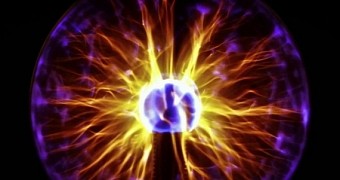Apart from solid, liquid and gas, there is one other fundamental state of matter: plasma. It's not as popular as the other three, but it's seriously cool and should probably get mentioned more often.
As detailed in the video below, plasma comes from gas. Specifically, it is possible to create it by heating a gas or exposing it to an electromagnetic field that you can generate using a laser of a microwave generator.
What makes plasma so very special is the fact that, although it comes from gas, it does not contain any neutral atoms or molecules. Instead, it comprises ions and electrons.
For those who aren't all that familiar with chemistry, ions are essentially atoms or molecules that contain either fewer or more electrons than protons. Because of this, they are electrically charged.
The reason heating and electromagnetic fields can turn otherwise perfectly average gases into plasma is that they tend to knock electrons off particles, birthing a soup of ions and free-moving electrons.
What's interesting is that, although it accounts for as much as 99% of the visible universe, this fourth state of matter was only discovered a couple of centuries back.
Thus, it was towards the end of the 19th century that a British chemist identified it and named it radiant matter. Some time after, this state of matter started being called by its current name.

 14 DAY TRIAL //
14 DAY TRIAL // 